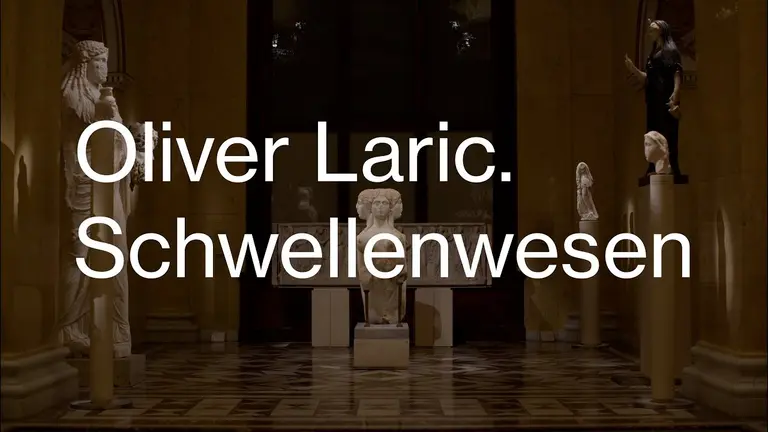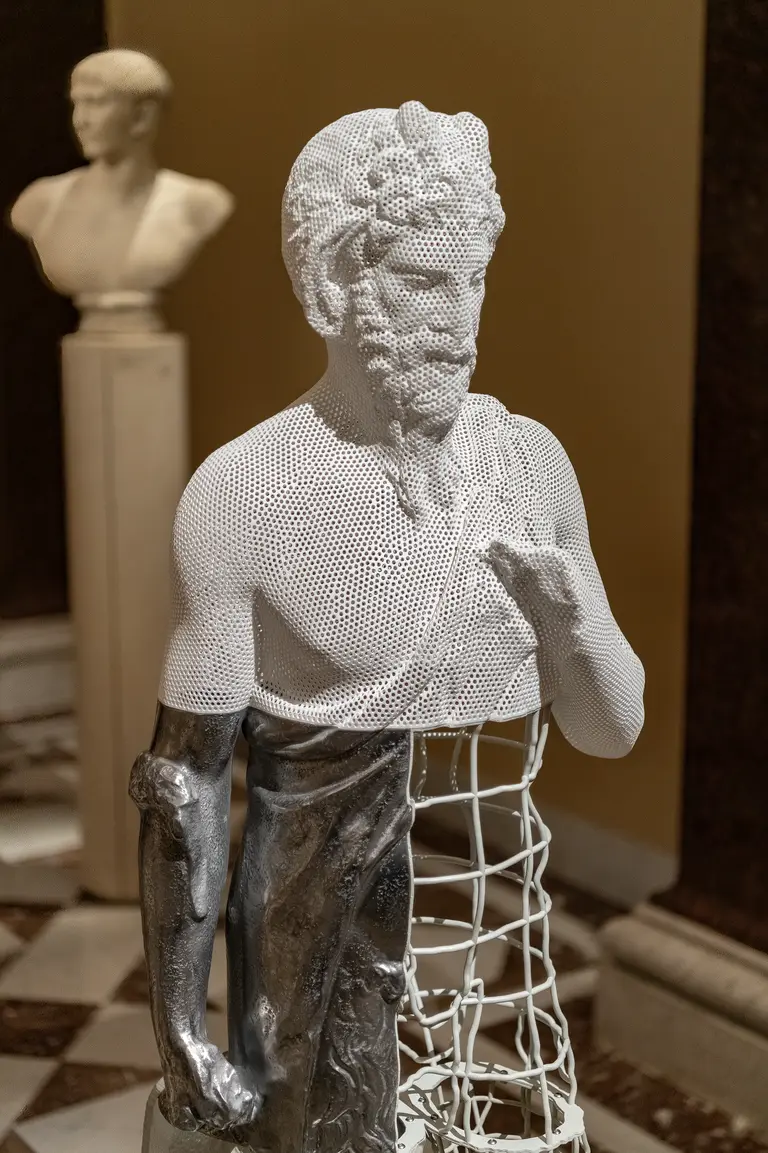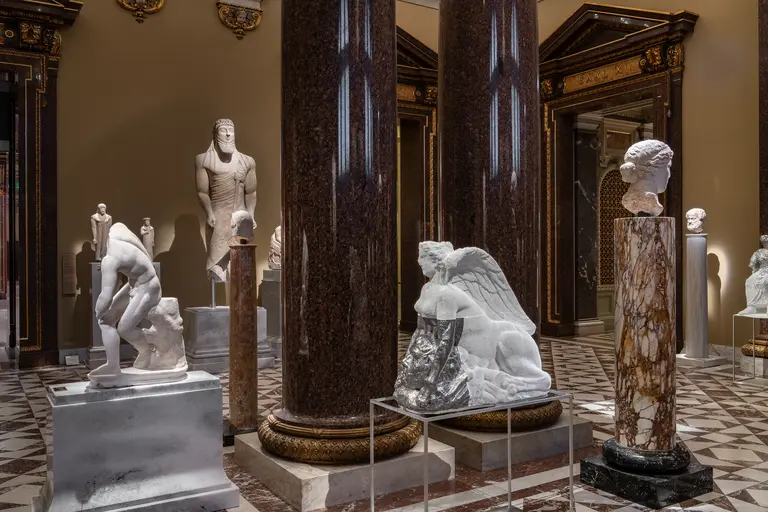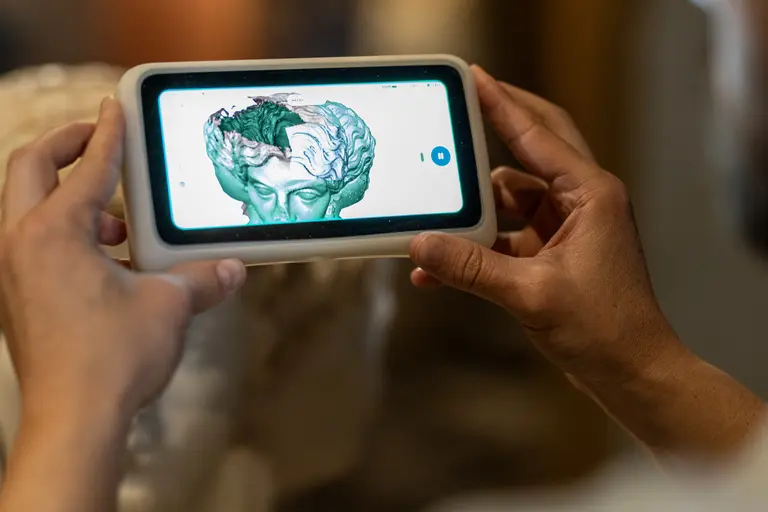Collection of Greek and Roman Antiquities, Hochparterre
Maria-Theresien-Platz, 1010 Vienna
Google Maps
Oliver Laric. Liminal Beings

This solo exhibition at the Kunsthistorisches Museum, dedicated to the Austrian artist Oliver Laric (born 1981 in Innsbruck), explores the dynamic interplay between original, reproduction, and transformation. Laric engages in a direct dialogue with works from the Kunsthistorisches Museum’s Collection of Greek and Roman Antiquities, which serve as the starting point for new works.
His sculptures invite visitors to see the museum not only as a place of preservation but also as a space for constant re-encounters with the past.
Address
Opening times
Open Daily, 10 a.m. – 6 p.m.
Thu, 10 a.m. - 9 p.m.
Mysterious beings
Laric’s works begin with a digital 3D scan of historical sculptures, which he then translates into new, hybrid forms. The exhibition at the Kunsthistorisches Museum focuses on hybrid beings – creatures that combine characteristics from different biological or symbolic categories. They are among the oldest and most widespread motifs in the mythology, art, and religion of many cultures. As symbols of the mysterious they serve as projections of human desires, longings, and fears.
Digital sculptures in dialogue with antiquity
In Liminal Beings, works from the Collection of Classical Antiquities enter into an open dialogue with Laric’s sculptures, which were created especially for this special presentation using 3D printing. These are not only reinterpretations, but also reflections on the process of cultural transmission and the changeability of meanings over time. His works move between antiquity and the present, between the museum context and digital space. At its heart is the artist’s idea that even concepts, images, forms, and myths deeply rooted in cultural identity are never complete, but are constantly undergoing further development and recontextualization.
By using digital technologies to transform and rethink historical artefacts, Laric opens up new perspectives on museum collections and their possible future. Liminal Beings is thus not only an artistic intervention, but also a contribution to the current debate on accessibility, digitisation, and the handling of our cultural heritage.



On display are sculptures that refer to the Seated Sphinx with Griffin Head (Roman, 1st–2nd century CE) and the Four-headed Sphinx (Roman, second half of the 2nd century CE) from the Kunsthistorisches Museum’s Collection of Greek and Roman Antiquities, which has fascinated him since childhood.
In addition, artefacts from the 1st–4th centuries CE from collections in Paris, Crete, Colchester, Seoul, Athens, Torre Annunziata, and Vienna were scanned. The eight newly created works differ from their historical models in terms of material and scale – as translucent resin forms, modular compositions, or seemingly incomplete fragments.
Further exhibitions
Our exhibitions take you back to the rich history of our museum. Here, proven masterpieces meet newly explored themes - a look at art, culture and the past that continuously illuminates the collection.






